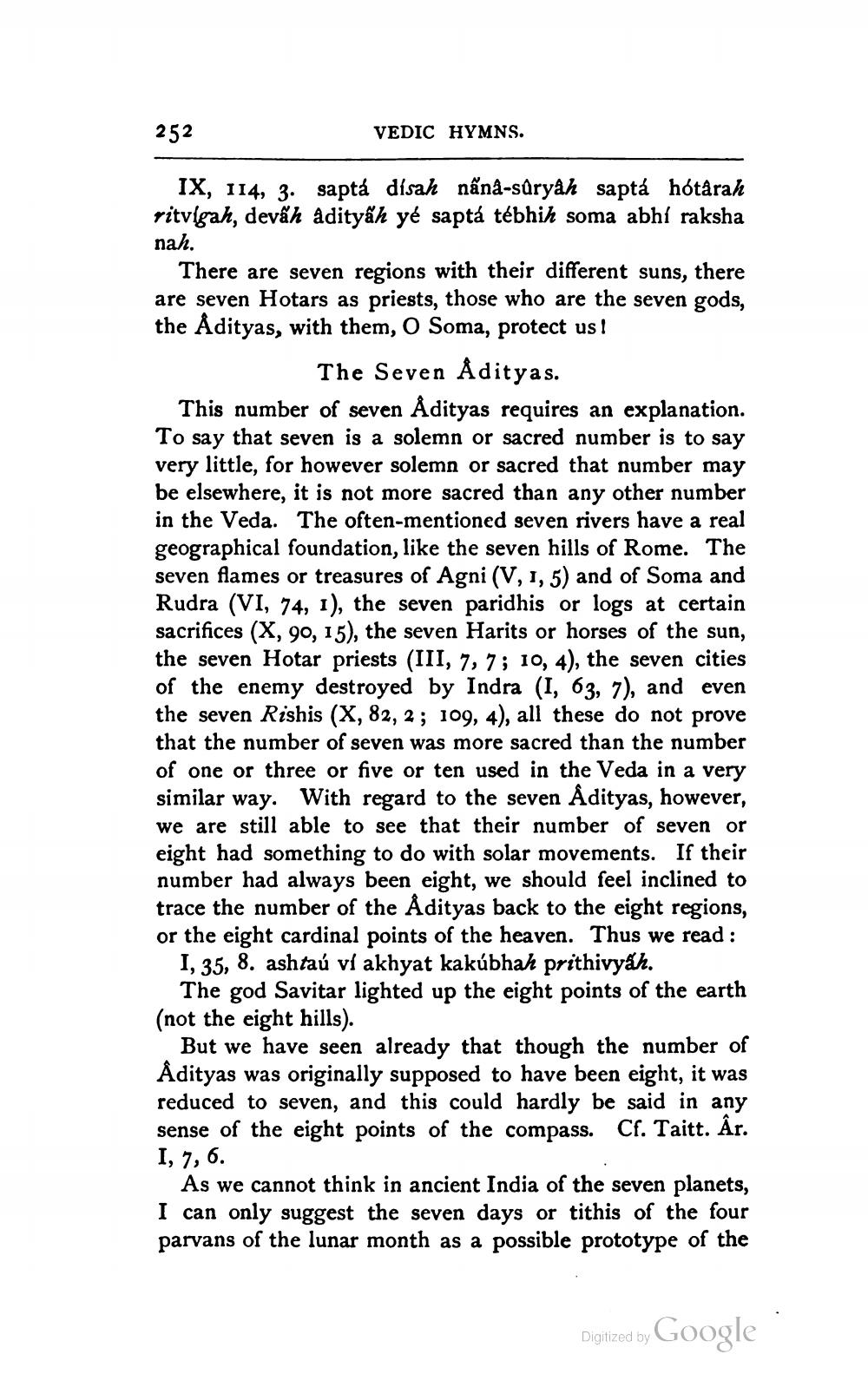________________
252
VEDIC HYMNS.
IX, 114, 3. saptá disah nấnå-sûryah saptá hótarah ritvígah, deváh adityah yé saptá tébhih soma abhí raksha nah.
There are seven regions with their different suns, there are seven Hotars as priests, those who are the seven gods, the Adityas, with them, O Soma, protect us!
The Seven Ådityas. This number of seven Ådityas requires an explanation. To say that seven is a solemn or sacred number is to say very little, for however solemn or sacred that number may be elsewhere, it is not more sacred than any other number in the Veda. The often-mentioned seven rivers have a real geographical foundation, like the seven hills of Rome. The seven fames or treasures of Agni (V, 1, 5) and of Soma and Rudra (VI, 74, 1), the seven paridhis or logs at certain sacrifices (X, 90, 15), the seven Harits or horses of the sun, the seven Hotar priests (III, 7, 7; 10, 4), the seven cities of the enemy destroyed by Indra (I, 63, 7), and even the seven Rishis (X, 82, 2; 109, 4), all these do not prove that the number of seven was more sacred than the number of one or three or five or ten used in the Veda in a very similar way. With regard to the seven Adityas, however, we are still able to see that their number of seven or eight had something to do with solar movements. If their number had always been eight, we should feel inclined to trace the number of the Adityas back to the eight regions, or the eight cardinal points of the heaven. Thus we read:
I, 35, 8. ashtaú vi akhyat kakúbhah prithivyáh.
The god Savitar lighted up the eight points of the earth (not the eight hills).
But we have seen already that though the number of Ådityas was originally supposed to have been eight, it was reduced to seven, and this could hardly be said in any sense of the eight points of the compass. Cf. Taitt. Âr. I, 7,6.
As we cannot think in ancient India of the seven planets, I can only suggest the seven days or tithis of the four parvans of the lunar month as a possible prototype of the
Digitized by Google
Digitized by




